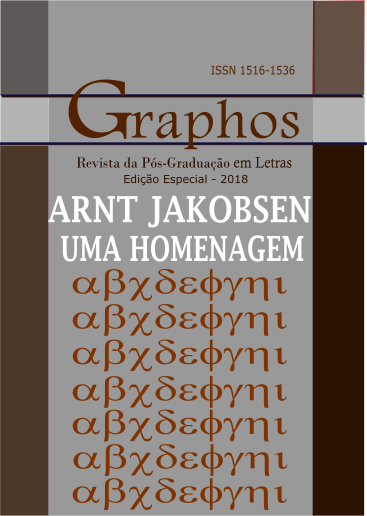Registrando a produção do texto-alvo com o Translog
Palavras-chave:
Translog, Acionamento de teclas, Processo tradutórioResumo
O Translog é um programa de computador que registra os acionamentos de teclas envolvidos na produção de uma tradução. Para fins de pesquisa, esse programa pode ser usado para ampliar a observação direta e suplementar os protocolos de verbalização do pensamento em voz alta (do inglês, think-aloud protocol, ou TAP). Com informações detalhadas em tempo real sobre o processo de digitação, podemos estudar todo o processo de edição que acontece durante a produção de uma tradução, a quantidade de tempo despendido em determinadas tarefas de tradução e a conexão entre o tempo de pausa e o processamento de informações. Este artigo resume as diversas funções do programa Translog e descreve como os dados são gravados e como podem ser representados e analisados. Por fim, defende-se a triangulação, ou seja, a combinação de metodologias como forma de aprimorar a metodologia de pesquisa em tradução.
Downloads
Referências
BOUCHARD, T. J. Unobtrusive measures: an inventory of uses. Sociological Methods and Research, v. 4, p. 267-300, 1976.
CAMPBELL, D. T.; FISKE, D. W. Convergent and discriminant validation by the multitraitmultimethod matrix. Psychological Bulletin, v. 56, p. 81-105, 1959.
DENZIN, N. K. The research act. 2. ed. Nova York: McGraw-Hill, 1978.
EKLUNDH, K. S.; KOLLBERG, P. Computer tools for tracing the writing process: from keystroke records to S-notation. In: RIJLAARSDAM, G.; COUZIJN, M.; VAN DEN
BERGH, H. (Ed.). Current research in writing: theories models and methodology. Amsterdã: Amsterdam University Press, 1995. p. 526-541.
JAKOBSEN, A. L. Logging time delay in translation. In: HANSEN, G. (Ed.). LSP texts and the process of translation, Copenhagen Working Papers ins LSP 1. Copenhagen: Copenhagen Business School, 1998a. p. 73-101.
JAKOBSEN, A. L. Understanding the process of translation: the contribution of time delay studies. Paper read at the ASLA symposium on Translation and Interpreting (Översättning och tolkning), Stockholm University, Estocolmo, 5-6 nov. 1998b.
JENSEN, A.; JAKOBSEN, A. L. Translating under time pressure: an empirical investigation of problem solving activity and translation strategies by non-professional and professional translators. Amsterdã: John Benjamins, 2000. p. 105-116.
JICK, T. D. Mixing qualitative and quantitative methods: triangulation in action. Administrative Science Quarterly, v. 24, p. 602-611, 1979. JÄÄSKELÄINEN, R. Tapping the process: an explorative study of the cognitive and affective factors involved in translating. Joensuu: Joensuun yliopisto, 1999.
KOLLBERG, P. S-notation – a computer based method for studying and representing text composition. Estocolmo: Stockholm University (Kungl. Tekniska Högskolan), 1998.
PODOLSKAYA, N. Translation process: a computer-aided modelling technique. Paper read at the conference on Translation and Cognition at Savonlinna School of Translation Studies, University of Joensuu, 2-3 out. 1998.
SCHILPEROORD, J. It’s about time: temporal aspects of cognitive processes in text production. Amsterdã: Rodopi, 1996.
SMITH, H. W. Strategies of social research: the methodological imagination. Englewood Cliffs, NJ: Prentice Hall, 1975.
WEBB, E. J.; CAMPBELL, D. T.; SCHWARTZ, R. D.; SECHREST, L. Unobtrusive measures: non-reactive research in the social sciences. Chicago: Rand McNally, 1966.







